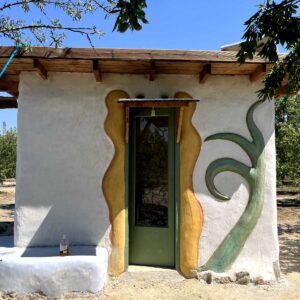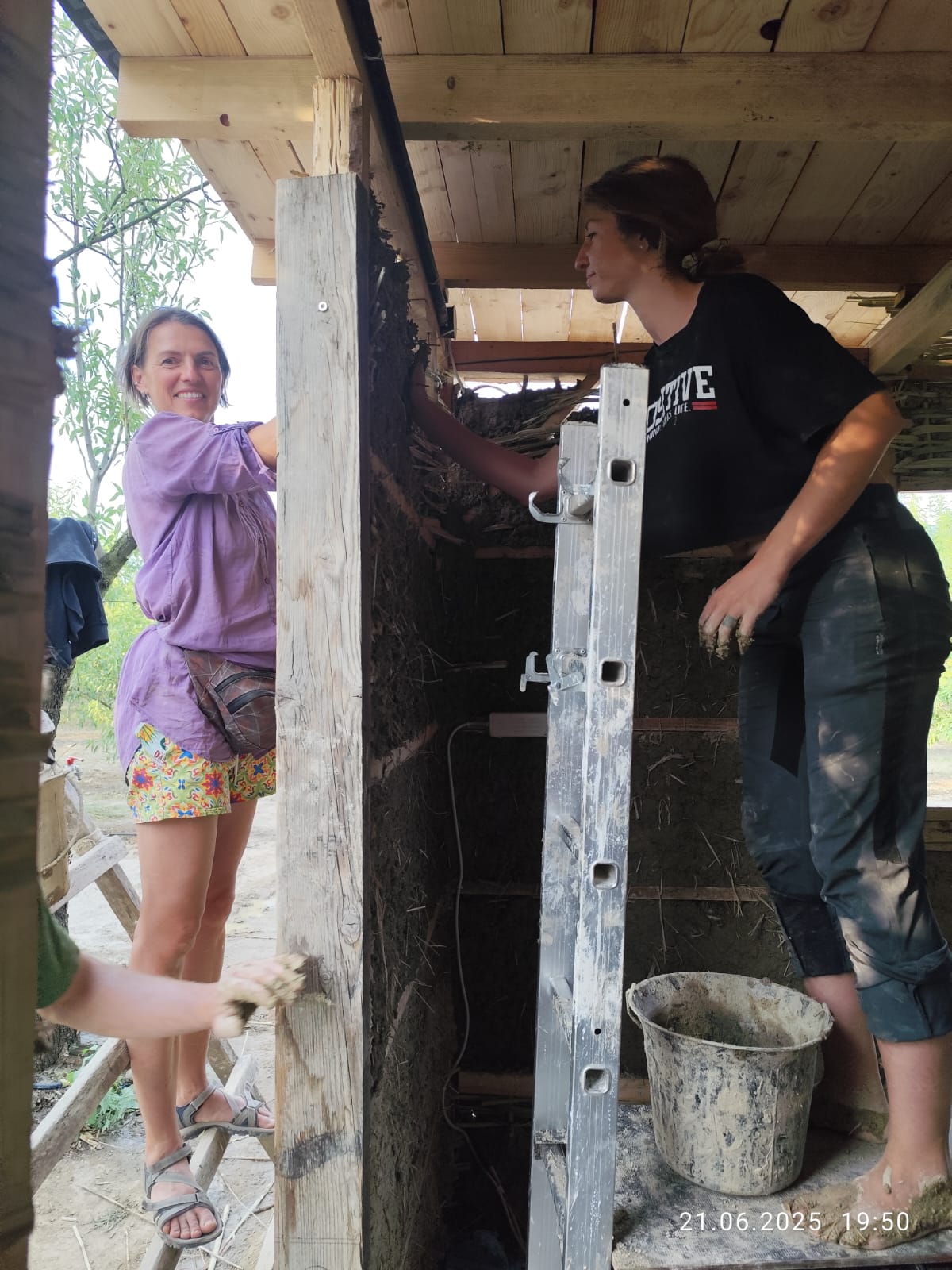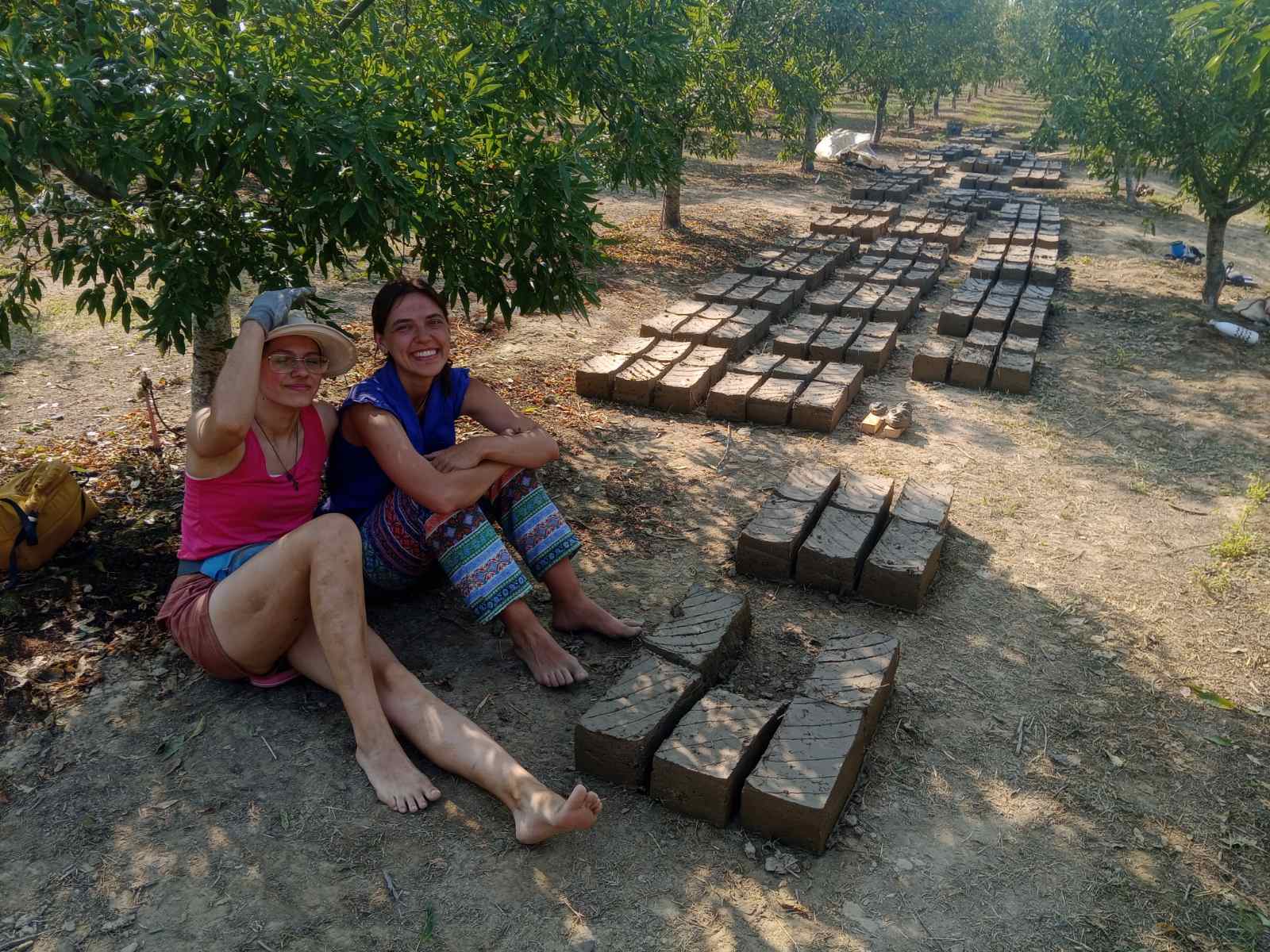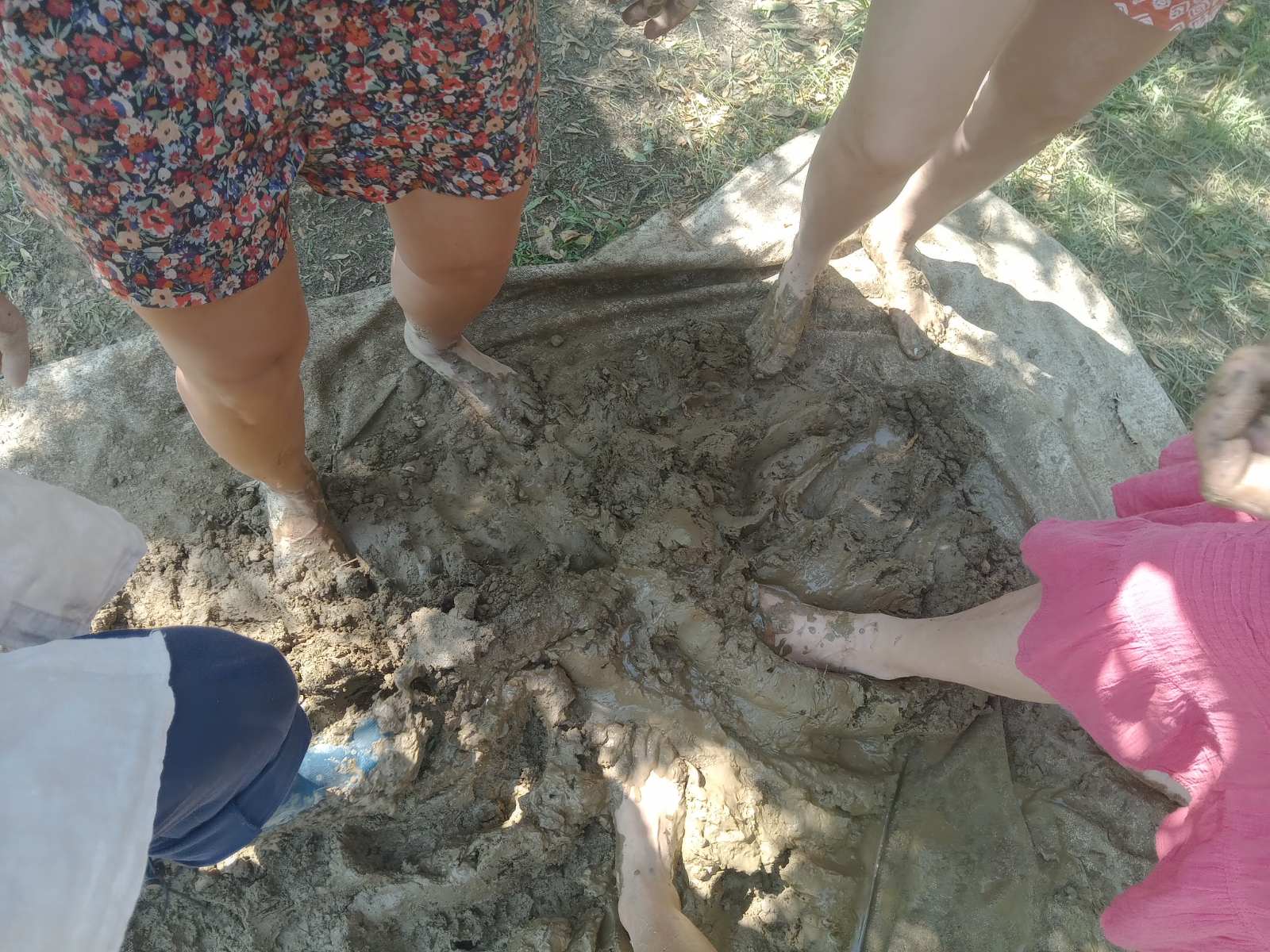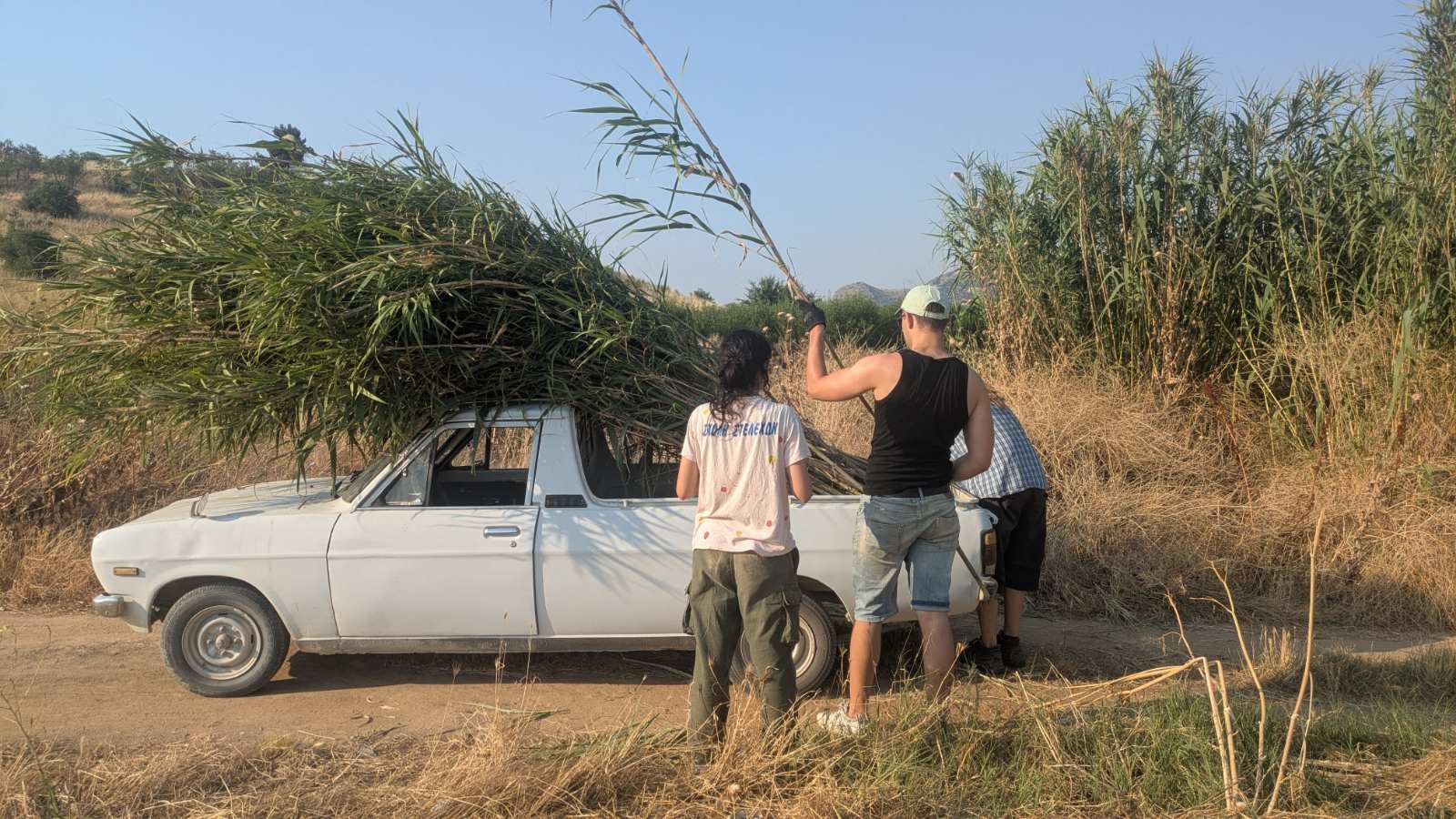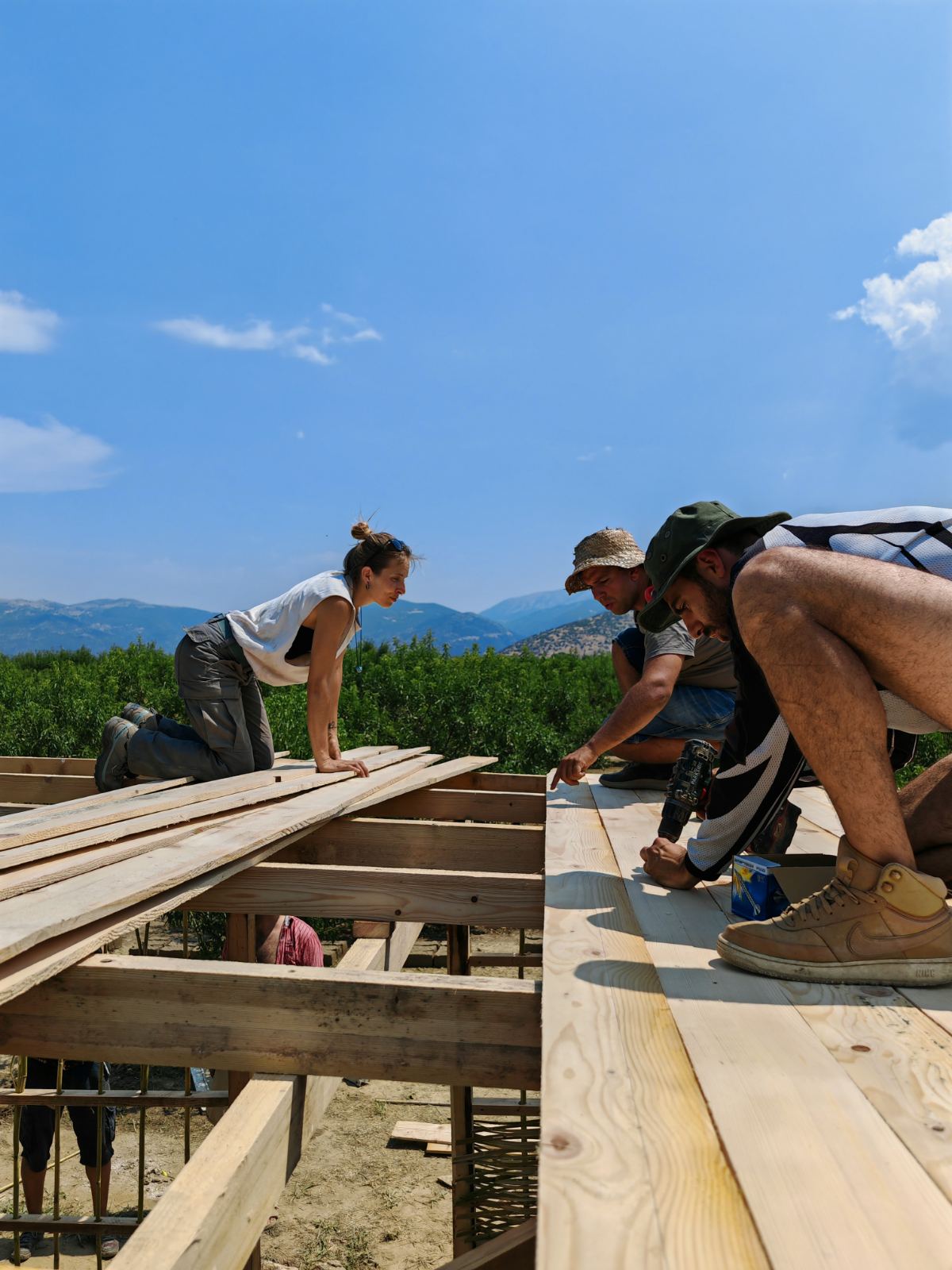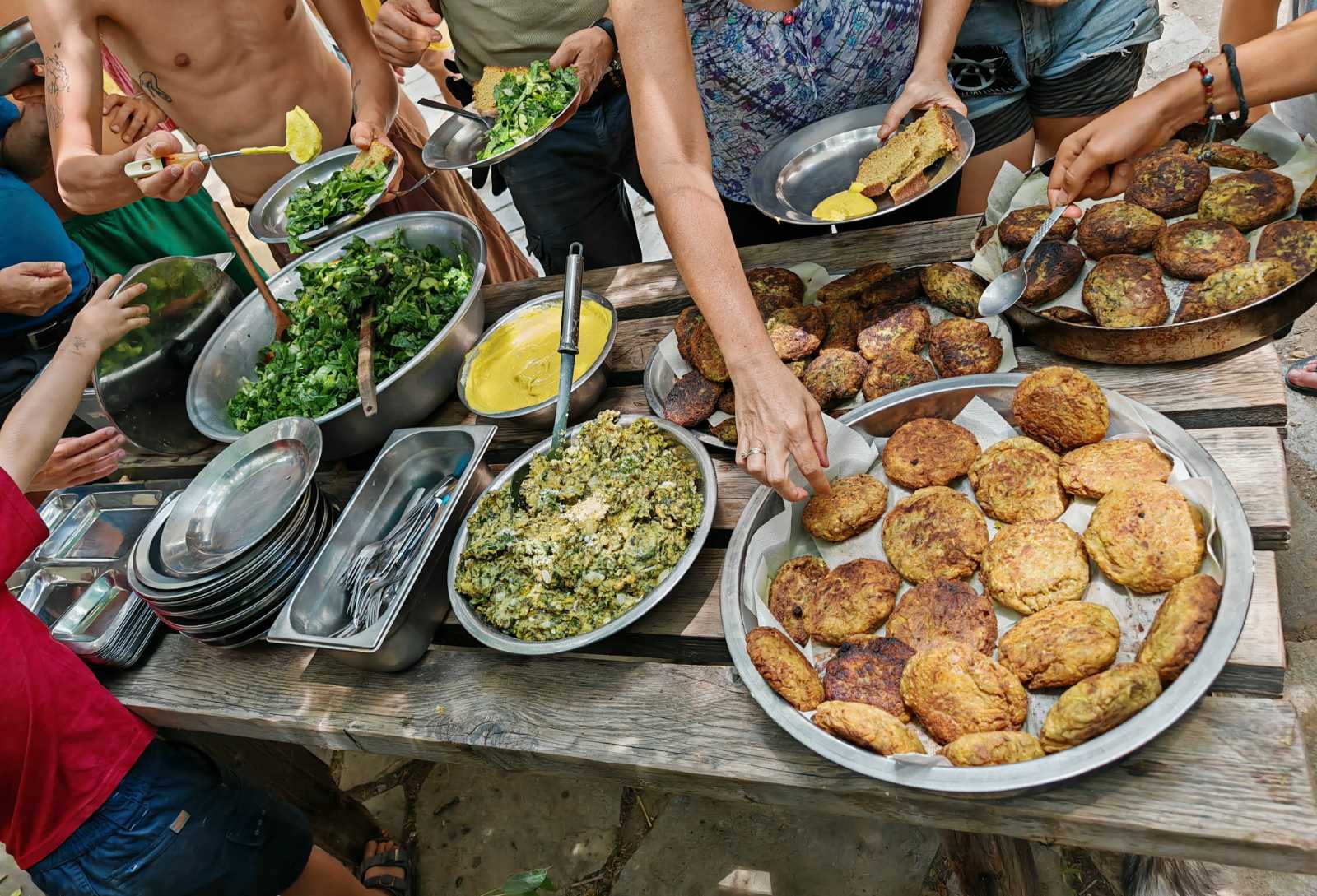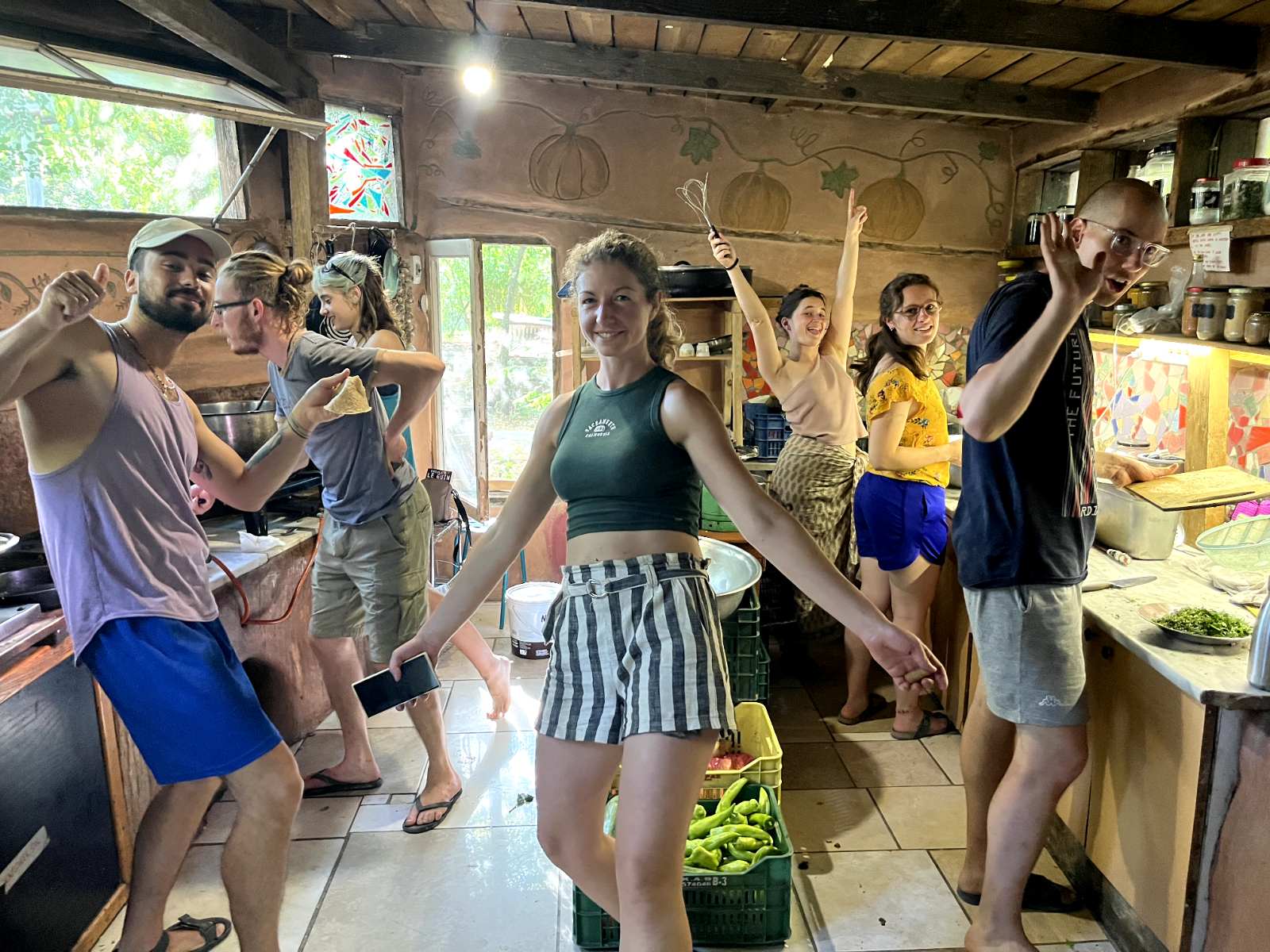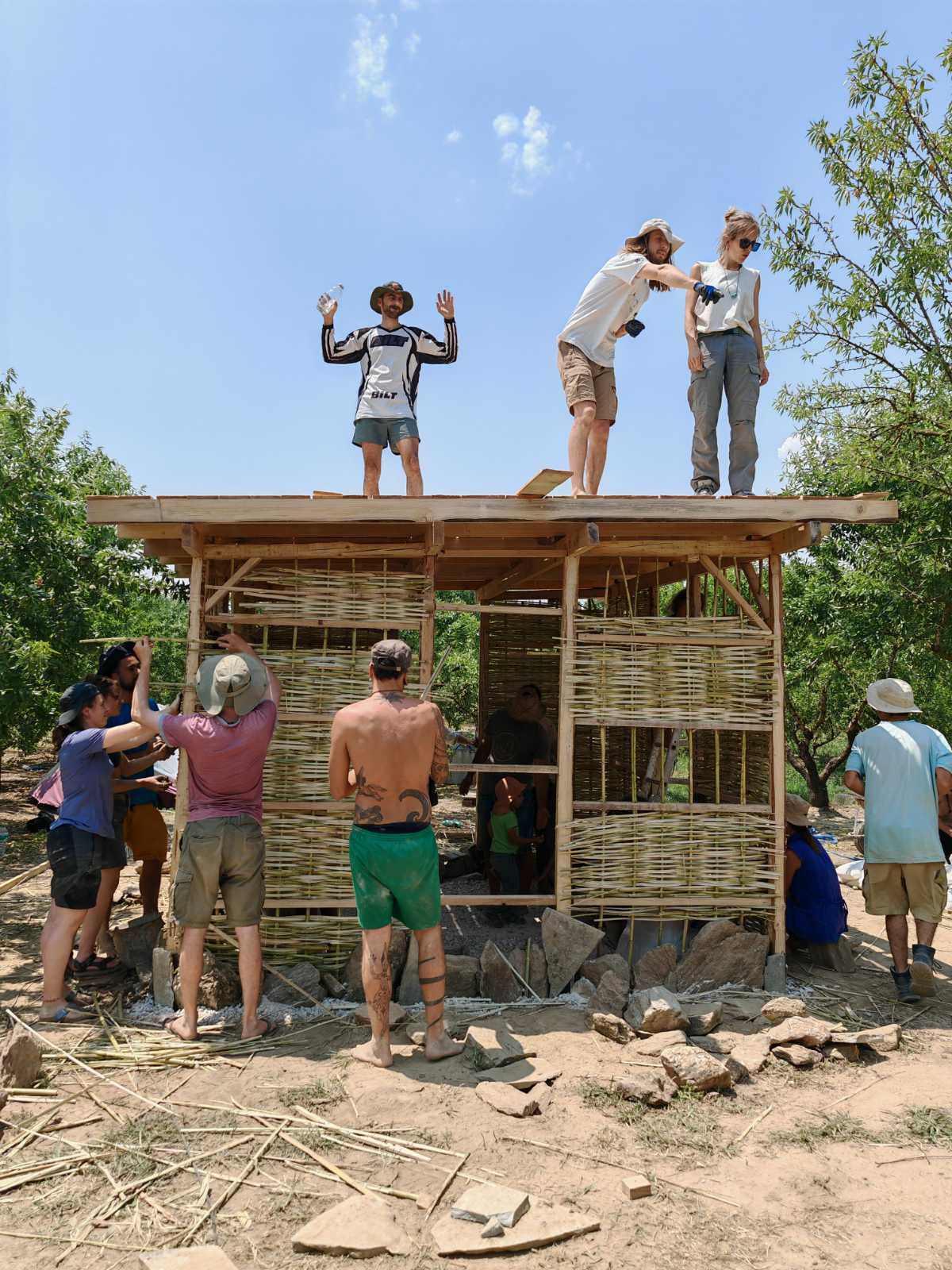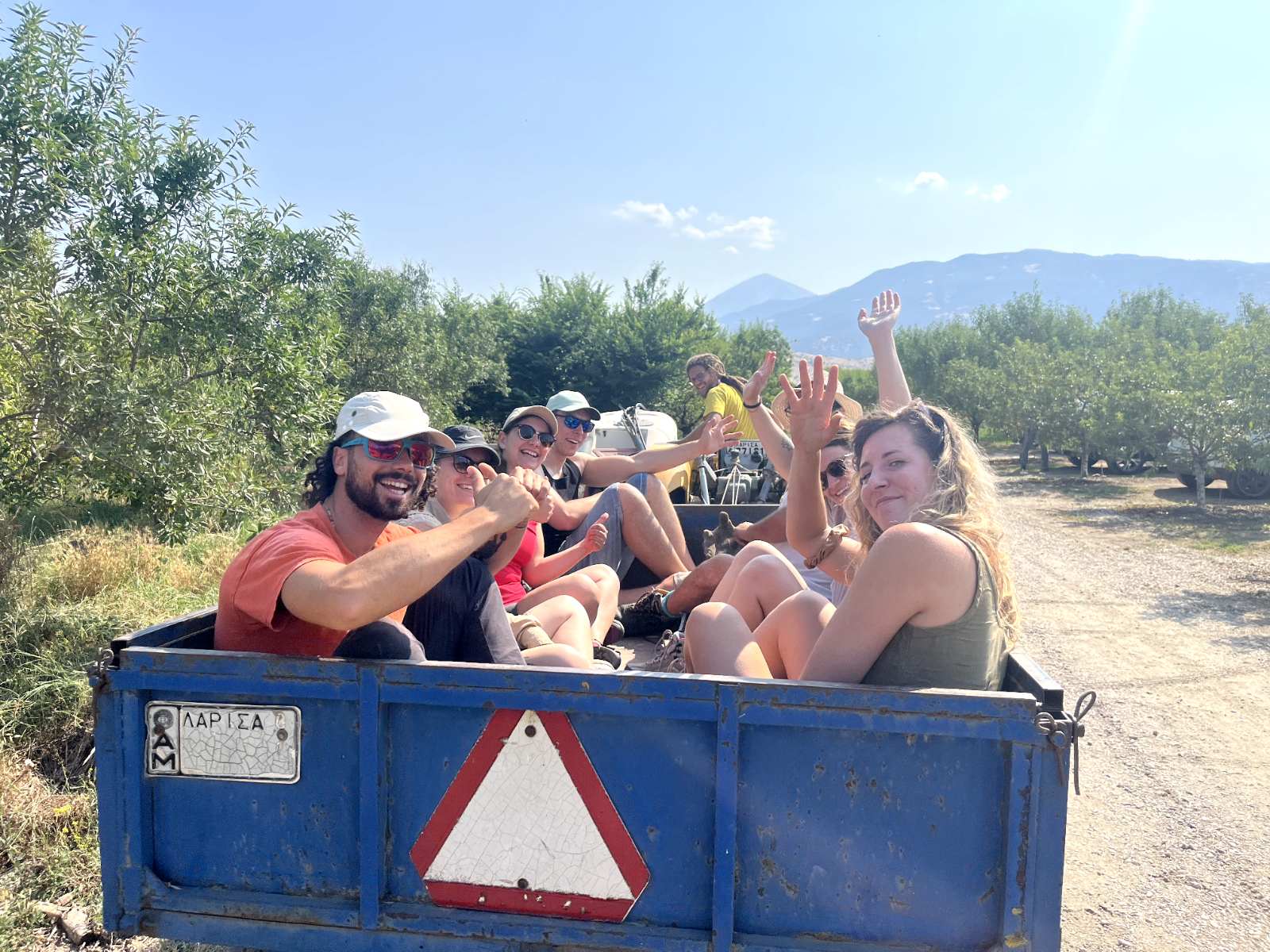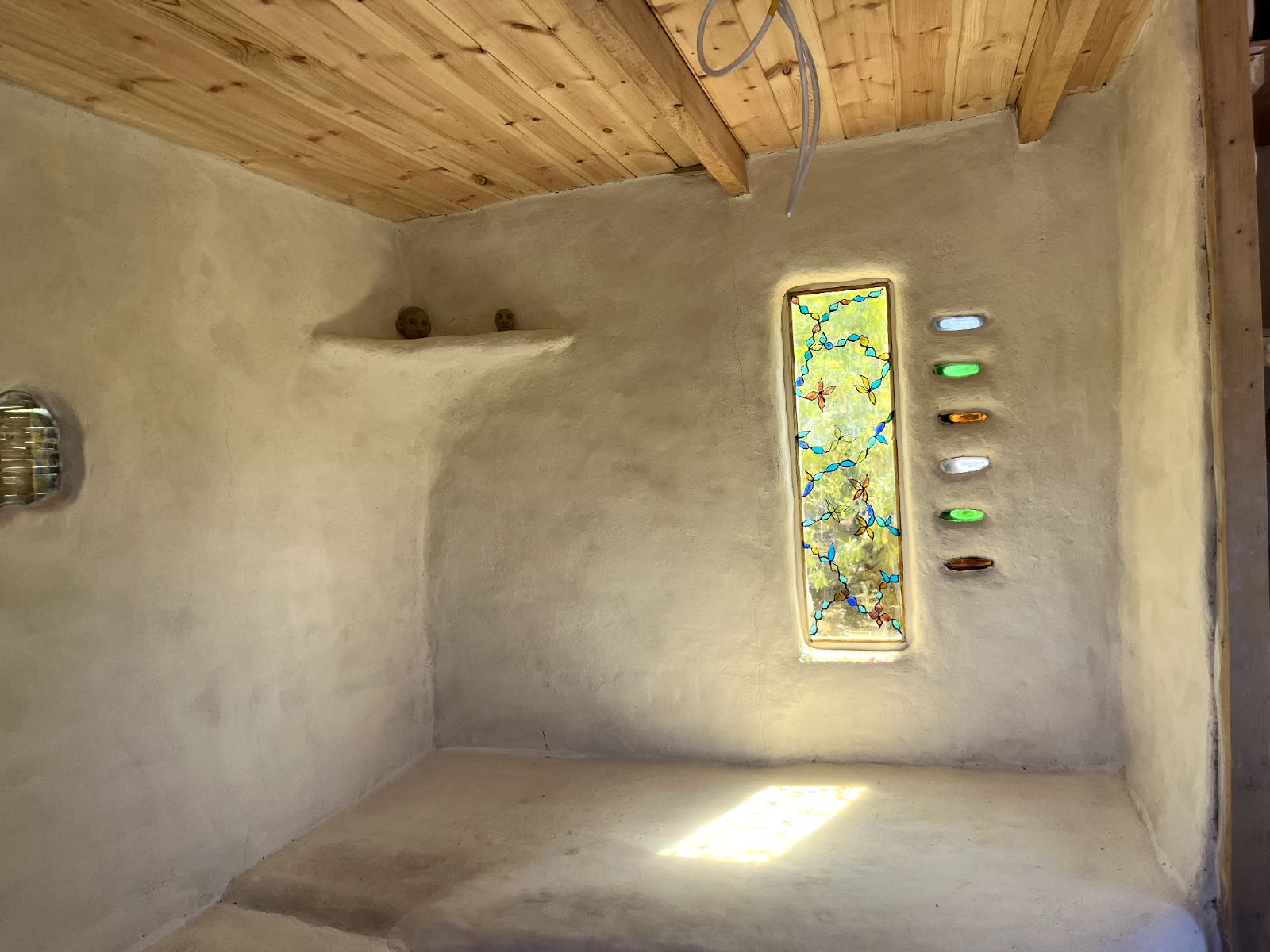Is it possible to build a house in 9 days?
Yes – if you’re 40 enthusiasts with two experienced teachers and you’re at COB!
Even though the house was only 10 sq.m., it had everything necessary for one person to live.
But what does a person really need to be happy? Water, air, food, a roof, a bed, a sink… and lots of love! 🙂
We had no boss or manager – we were like one single organism.
In the past, most houses were built in a similar way. Families, neighbors, friends – everyone came to help in any way they could. The building process itself turned into a celebration.
I dream that one day my own house will be built in the same way – with love, alongside friends and dear people.
During this unique building course, one of the most valuable things was the people!
Open, beautiful, talented, curious and capable.
The builders came from 11 European countries: Greece, Serbia, Bulgaria, France, Italy, Germany, Portugal, Poland, Lithuania, Latvia – and even Ukraine, which for me was like a gift – spending time with people who carry the same pain in their hearts as I do…
We were united by a shared vision of living in harmony with nature, caring for the environment and for all living beings – including other humans.
The uniqueness of each ethnic background was beautifully visible.
I enjoyed the sounds of French, Italian, Greek, Portuguese, and Ukrainian.
While plastering walls, cleaning bamboo, and kneading clay, we got to know new worlds and authentic cultures – with such familiar joys and sorrows.
I am deeply grateful to European programs like Erasmus, which make such learning experiences and intercultural exchanges possible.
In these difficult times, they bring people together.As society becomes more and more divided, such initiatives are like a balancing scale in a world full of war, injustice, and destruction.
Our daily schedule at SOV:
- 7:30 – Breakfast and planning the tasks for the day
- 8:00–13:00 – Working on the house, which we were building in the middle of an almond orchard with a mountain view
- 13:00 – Lunch (as well as breakfast and dinner – all vegetarian, even vegan)
- 13:30–16:30 – Rest: napping, swimming in the lake, or even the sea
- 16:30 – Lecture on natural building techniques and principles, with coffee, fruits, and ice cream
- 18:00–20:30 – After the worst of the heat (+40°C) had passed – back to building
- 21:00 – Dinner with dancing, singing, and games
We slept in tents in the same almond grove, accompanied by the gentle sounds of freshly hatched cicadas.
Materials we used to build the tiny house:
With this type of construction, it’s essential to begin by asking: What materials are available nearby?
In our case:
- Clay – from the garden soil
- Sand – from a nearby quarry, along with the stones
- Straw – from neighboring fields
- Bamboo – from a nearby grove with a lake
- Wool – from local shepherds
Materials we had to purchase: wooden planks, lime, marble powder, gravel, natural glue, asphalt paper, oxide pigments, resin, nylon, pipes, cables, and a solar panel.
The construction process:
- We marked out the 12 sq.m. base
- Dug 30 cm deep, leveled the ground, filled with gravel, and tamped it down
- Prepared wooden posts (coated the bottom 40 cm with waterproof resin) and placed them perpendicularly into the ground
- Built the load-bearing wooden structure and covered the roof with boards
- Meanwhile, others made over 250 sun-dried bricks (clay + straw + sand) in one day!
- Wove bamboo between the wooden frame as a base for the walls
- Plastered with clay, sand, and straw mixture
- Installed insulation and substrate for a green roof, along with succulent plants collected from the surroundings
- Reused and restored second-hand windows and doors
- Installed pipes and cables; added the solar panel
- Built furniture from clay bricks – bar counter, bed, bench, stove, cupboard
- Final plastering: clay, lime, fine straw, Glutolin… and our hair 🙂
- Insulated the roof with washed and dried wool in cotton sacks
- Decorated walls with reliefs, colors, and glass bottles
- Used the tadelakt technique (marble powder, lime, oxide pigment, olive soap) for the sink and bar counter
- Made the floor from clay and sand, tamped it using a tool named “Varvara” (in Greece)
- Fired up the stove. Done!
The whole construction process felt like a giant sandbox game with friends.
I sincerely recommend that everyone try building their own home in such a way!
I returned from Greece to my usual life… and what remained was a deep longing for these wonderful people – and the dream of my own house, built with joy and love.
And finally – a special thank you:
My heartfelt thanks to the organization “Green Scool Village”, which sent us to this course – COB in Nessonas.
Gratitude to our teacher Kostas, and to the charming and patient Jérôme, who guided us through the whole process with inspiration and calm.
And thank you to the volunteers for the delicious food!
And of course – to the Erasmus+ program. Without your support, none of this would have been possible. Thank you from the bottom of my heart! 💚

